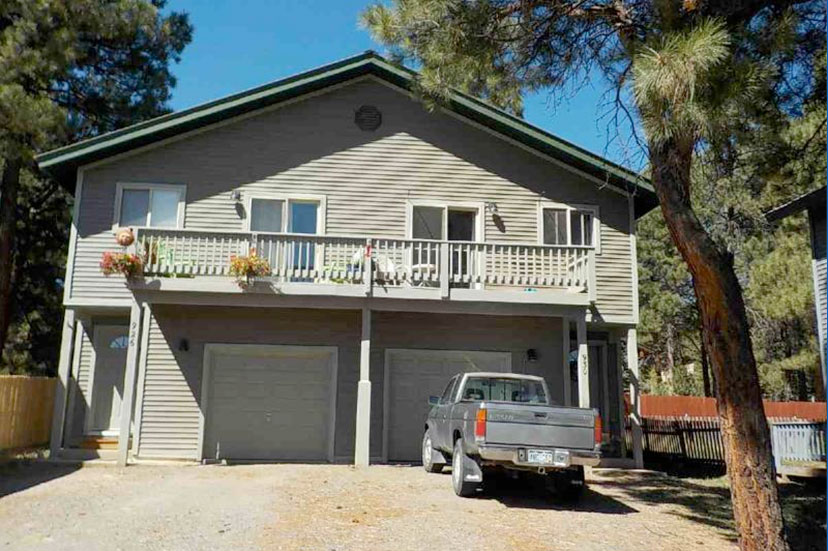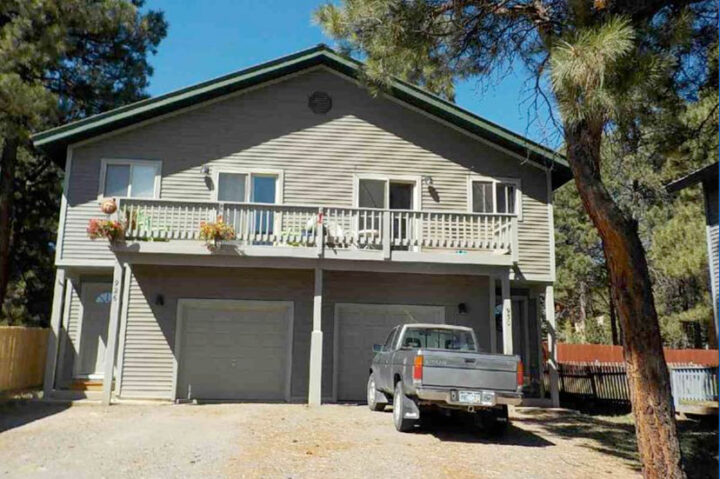Yesterday, we shared an opinion piece from former property appraiser Cynda Green, noting some of the curious aspects of the (estimated 80%?) increase in property valuations published by Archuleta County Assessor Johanna Tully-Elliot last month.
Ms. Green concluded her column:
The Assessor’s disclaimer at the top of their property value page:
“The data on this website is provided ‘as is’ without warranty of accuracy, timeliness, or completeness. Archuleta County makes nor [sic] warranties of merchantability or fitness. If you feel any of the data is incorrect, please contact our office at 970-264-8310…”
Heed the Assessor’s advice. Use the bottom of the Notice of Valuation to file a protest by June 8, if your valuation is too high.
In terms of justice and fairness, Ms. Green is offering sensible advice. The County’s mass appraisal system, running on Tyler Technologies software, will always ‘overvalue’ some properties. It’s the nature of the beast. Some properties are undervalued, and some are overvalued. The system doesn’t generate perfect results.
Ideally, most of the valuations are reasonably accurate, based on the skyrocketing sale price we saw here in Archuleta County between July 2020, and June 2022 — the defined appraisal period — during the height of the COVID crisis, when a large flock of vacation rental investors and second-home buyers drove up the selling price of a single family home to record levels.
Those higher sale prices are the legal basis for our increased valuations. I suspect, however, that a considerable number of homeowners and vacant land owners will be protesting their property values.
Of course, in terms of justice and fairness — if the world were actually “fair” — we would see a similar number of property owners who believe their homes were ‘undervalued’ also protesting their valuations.
If the world were actually ‘fair’… and we all wanted to pay our ‘fair share’.
I seriously doubt, however, that anyone will protest because their valuation is too low. Just an assumption.
But let’s think about that, for a minute.
These new property valuations are going to drive up our property taxes in Archuleta County. Unfortunately, the impact will land hardest on working families and people on fixed incomes. (Which, I will mention, includes myself and my family.)
If the world were actually “fair”, that wouldn’t be the case. The burden would impact all social groups equitably. But there you have it. Welcome to America.
The largest portion of our property taxes go to fund the Archuleta School District, through a mill levy of 27.1 mills. Unless your property is in the Ignacio School District, in which case you are paying 34.2 mills. One mill is equal to one dollar for every $1,000 of assessed property value.
(I’m rounding the numbers to keep things simple.)
The next highest mill levy is the County government, at 18.2 mills. If you live within the Aspen Springs Metro District, you are also paying an additional 14.7 mills for your road maintenance. Certain other metro districts collect between 7.4 and 15.0 mills.
Depending on where you live in Archuleta County, you might also be paying the following mill levies:
- Pagosa Fire Protection District, 8.1 mills
- Pagosa Springs Medical Center, 3.9 mills
- Pagosa Area Water and Sanitation, water and sewer, 5.5 mills
- Pagosa Area Water and Sanitation, water service only, 1.9 mills
- Town of Pagosa Springs, 1.6 mills
- Ruby Sisson Library, 1.5 mills
- Town Sanitation District, 0.9 mills
- San Juan Water Conservancy, 0.3 mills
- Southwest Water Conservation, 0.4 mills
Your total mill levy will be somewhere between 39.9 mills and 80.0, depending on your location within the county.
For some of these districts, such as Archuleta County and PAWSD, your mill levy will be reduced next year — as a result of these higher valuations — to keep the tax rate within TABOR limits. Certain other districts, such as the Fire District and the Library District, have been “de-TABORed” and will be able to keep all the money you send them.
To put this stuff into perspective, we might consider the property taxes people pay in other communities. If we want to hear a horror story, here an excerpt from a January 2023 article by reporters Mina Bloom, Madison Savedra, and Joe Ward, about increased property taxes in Chicago, on https://blockclubchicago.org/ … in this case, the taxes on a duplex:
Josh Gartler said he felt “panic, despair, anger and frustration” when he received the bill for his brick two-flat on Whipple Street in Logan Square, an investment property he’s owned for more than 20 years.
Gartler’s tax bill rose to almost $26,000, more than $15,400 over the previous year, about a 145 percent increase.
Gartler has two tenants and lives in another home in the neighborhood. The Whipple Street property has a coach house, which may have contributed to the increase, but Gartler was stunned by the final assessment.
Gartler is appealing the assessment, but if he doesn’t win, he’ll be forced to hike up the rent on his loyal tenants.
This will also happen in Pagosa Springs. People paying rent will see their rents increase, but perhaps not nearly as much as what renters in Chicago might see.
We don’t have many duplexes in Pagosa Springs…
…but the ones that sold during the 2020-2022 appraisal period are generally valued, for 2023, at about half the value of my single family house, downtown.
How does a duplex get valued at half the price of a single-family home? Could this have something to do with a flood of wealthy vacation rental investors snapping up single-family homes for top dollar during 2020 and 2021? I can’t say.
After talking with an appraiser at the Assessor’s office — to get some clarification about why my valuation increased so much, compared to other types of property — and after discussing the options with my family, I’ve pretty much decided not to protest. I figure we will be able to afford $3,000 next year, to support our schools, hospital, library, fire district, etc.
It’s less than we’d be paying in Chicago.
And who would even want to live in Chicago, anyway?


